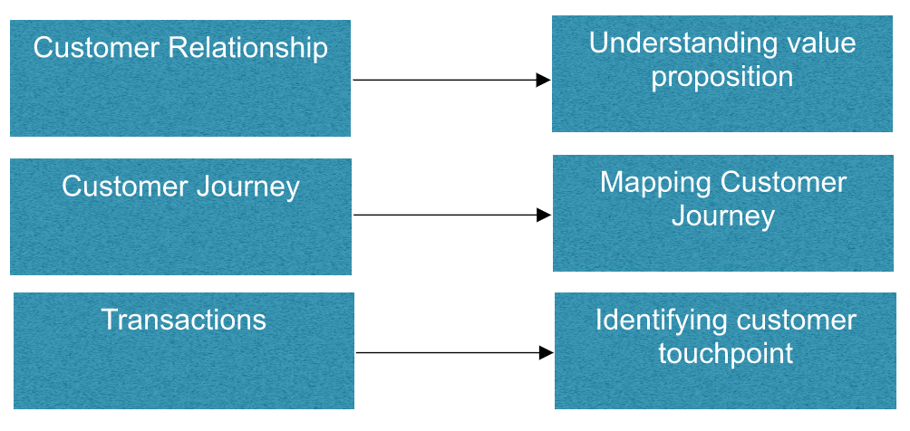The Data Handbook
How to use data to improve your customer journey and get better business outcomes in digital sales. Interviews, use cases, and deep-dives.
Get the bookMeasuring Customer Experience: How to Get Started?
Approximately ten years ago Fred Reichheld introduced the Net Promoter Score (NPS) as the ultimate indicator for customer loyalty and future growth. Many companies implemented NPS to their customer surveys without understanding how to use the results. The gap between knowing and doing remained while people didn’t know what to do with the results and confusion between measuring and managing transactions and customer relationship wasn’t any clearer.
Fortunately, we have come far from those days and instead of trying to find one metric that would solve all our problems in measuring customer experience, we should be able to understand the difference between measuring loyalty and experience. We will give you three easy steps on how to get started.
Step 1. Know what you are measuring
According to Forrester Research measuring customer experience should be divided to three levels: customer relationship, customer journey and transactions. Creating complicated models or frameworks for measuring is hardly ever the best way to start. In order to measure customer experience on all levels, one must understand from which elements the customer experience is built:

Picture 1. Tools understanding and building customer experience
Clarifying your value proposition helps you understand reasons and motivation factors that are driving your customers. Secondly, if you want to build exquisite customer experience you should be able to understand and manage your customer journey, what they value, what motivates them and how they are feeling. Thirdly, every touchpoint with customers creates an opportunity to communicate, impress, please or solve, but you should have a clear understanding of every touchpoint’s role in order to measure, develop or manage.
Step 2. Start with metrics that are easy to understand and easy to implement
NPS is easy enough to implement, being just a one question addition to the yearly customer survey, but you need to make sure people want to answer the "why" part. To get started with NPS, check out Lumoa's Net Promoter Score 101: the complete guide. Keep in mind that focusing only on the NPS score without analysing the why-question answers gives hardly any tools or insight for improving the end-to-end customer experience.
Easiest way to start is to connect measuring to individual transactions or touchpoints. For example, just asking how you felt after eating in our restaurant, shopping in our store and so forth, will give you insight on whether your customers are leaving happy or sad. Asking to expand a little bit with questions such as “What made you happy?” “What made you sad?” can very very fruitful, while emotions are the biggest predictor of customers’ loyalty behaviour. Mapping emotions to your customer journey will give you a great starting point for future development.
Step 3. Enrich your surveys with good quality data
Customer experience (CX) is still measured mostly with surveys. CX measuring and development programs should aim for creating deep insights of the customer journey. This is done by collecting all the vital information about customers’ behaviour during the journey. This means that online, you should collect data about customers, flow, conversion, retention and churn. This will give you clear view how you customers are moving forward in the journey and if there are some pitfalls. Deepen insight with customer panel, interviews or surveys will give you an excellent starting point to development.
Measuring customer experience starts with understanding the customer journey and just implementing a few easy metrics. When you get started with these, start collecting data, for example, with an analytics tool. While you are doing this, your understanding develops and you will be able to connect metrics to everyday development.
The Data Handbook
How to use data to improve your customer journey and get better business outcomes in digital sales. Interviews, use cases, and deep-dives.
Get the book



